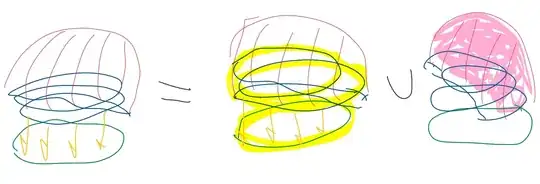Let's start from the begining. $S^1$ is given and another, distinct $D^2$ is given. The boundary $\partial D^2$ of $D^2$ is $S^1$ as well, but since it is distinct I will denote it as $\partial D^2$.
1- I do not understand the statement: "by attaching a disk $D^2$ along the boundary circle" what do the question mean by $along the boundary$? does it mean tangentially?
The concept is the same as in CW complex construction. You start with a map $f:\partial D^2\to S^1$ (in your case the triple winding) and then you glue $D^2$ and $S^1$ along this map, i.e. you take the quotient space
$$(D^2\sqcup S^1)/\sim$$
where "$\sim$" is generated by $x\sim f(x)$ for $x\in\partial D^2$. In particular note that if $f(x)=f(y)$ then $x\sim y$.
Also, are there other ways of attaching a disk?
Of course. If you glue along say identity $f(x)=x$ then the result is simply $D^2$. The same goes for the antipodal map $f(x)=-x$. But in your case this is something different. Note that if you attach along a double winding you obtain the real projective space $\mathbb{R}P^2$.
2- I feel like I should use Van Kampen theorem but I do not know how to divide my space $Y$ into union path-connected open sets each containing the basepoint $y_{0} \in Y$?
So let's generalize this a bit and assume that the attaching map winds $n$ times. Calculating the fundamental group for general $n$ is very similar to calculating it for $\mathbb{R}P^2$. Here is the answer that goes through the process in details: An intuitive idea about fundamental group of $\mathbb{RP}^2$ The core idea there is that they use the path lifting property of coverings instead of Van Kampen.
Try to generalize it (the quotient is no longer $x\sim -x$ but $x$ is now related to $n-1$ other points on $\partial D^2$) and note that the result should be $\mathbb{Z}_n$.
